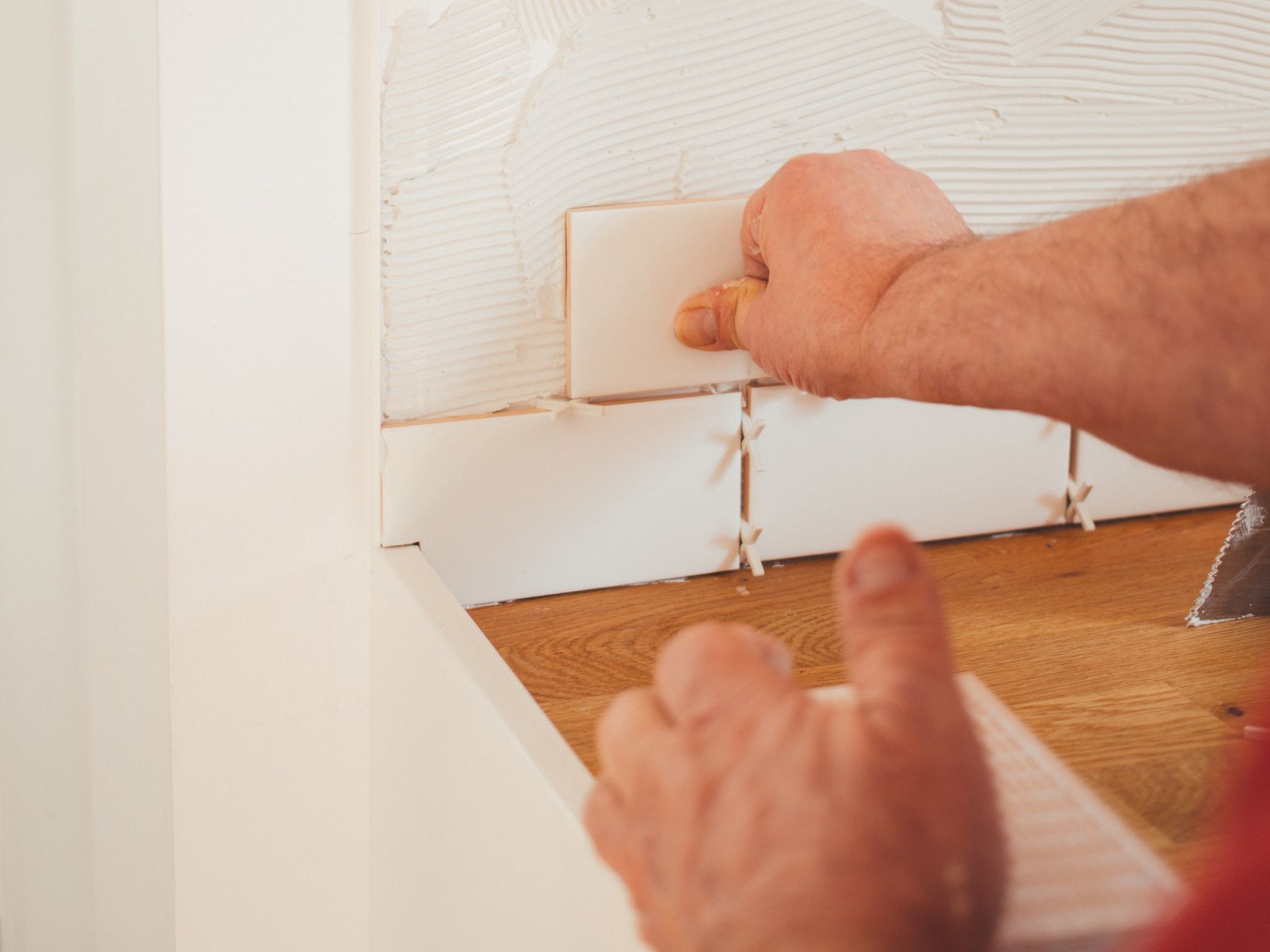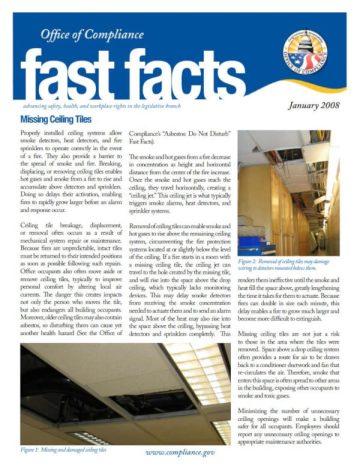Properly installed ceiling systems allow smoke detectors, heat detectors, and fire sprinklers to operate correctly in the event of a fire. They also provide a barrier to the spread of smoke and fire. Breaking, displacing, or removing ceiling tiles enables hot gases and smoke from a fire to rise and accumulate above detectors and sprinklers. Doing so delays their activation, enabling fires to rapidly grow larger before an alarm and response occur.
Ceiling tile breakage, displacement, or removal often occurs as a result of mechanical system repair or maintenance. Because fires are unpredictable, intact tiles must be returned to their intended positions as soon as possible following such repairs. Office occupants also often move aside or remove ceiling tiles, typically to improve personal comfort by altering local air currents. The danger this creates impacts not only the person who moves the tile, but also endangers all building occupants. Moreover, older ceiling tiles may also contain asbestos, so disturbing them can cause yet another health hazard (See the Office of Compliance’s “Asbestos: Do Not Disturb” Fast Facts).
The smoke and hot gases from a fire decrease in concentration as height and horizontal distance from the center of the fire increase. Once the smoke and hot gases reach the ceiling, they travel horizontally, creating a “ceiling jet.” This ceiling jet is what typically triggers smoke alarms, heat detectors, and sprinkler systems.
Removal of ceiling tiles can enable smoke and hot gases to rise above the remaining ceiling system, circumventing the fire protection systems located at or slightly below the level of the ceiling. If a fire starts in a room with a missing ceiling tile, the ceiling jet can travel to the hole created by the missing tile, and will rise into the space above the drop ceiling, which typically lacks monitoring devices. This may delay smoke detectors from receiving the smoke concentration needed to actuate them and to send an alarm signal. Most of the heat may also rise into the space above the ceiling, bypassing heat detectors and sprinklers completely. This renders them ineffective until the smoke and heat fill the space above, greatly lengthening the time it takes for them to actuate. Because fires can double in size each minute, this delay enables a fire to grow much larger and become more difficult to extinguish.

